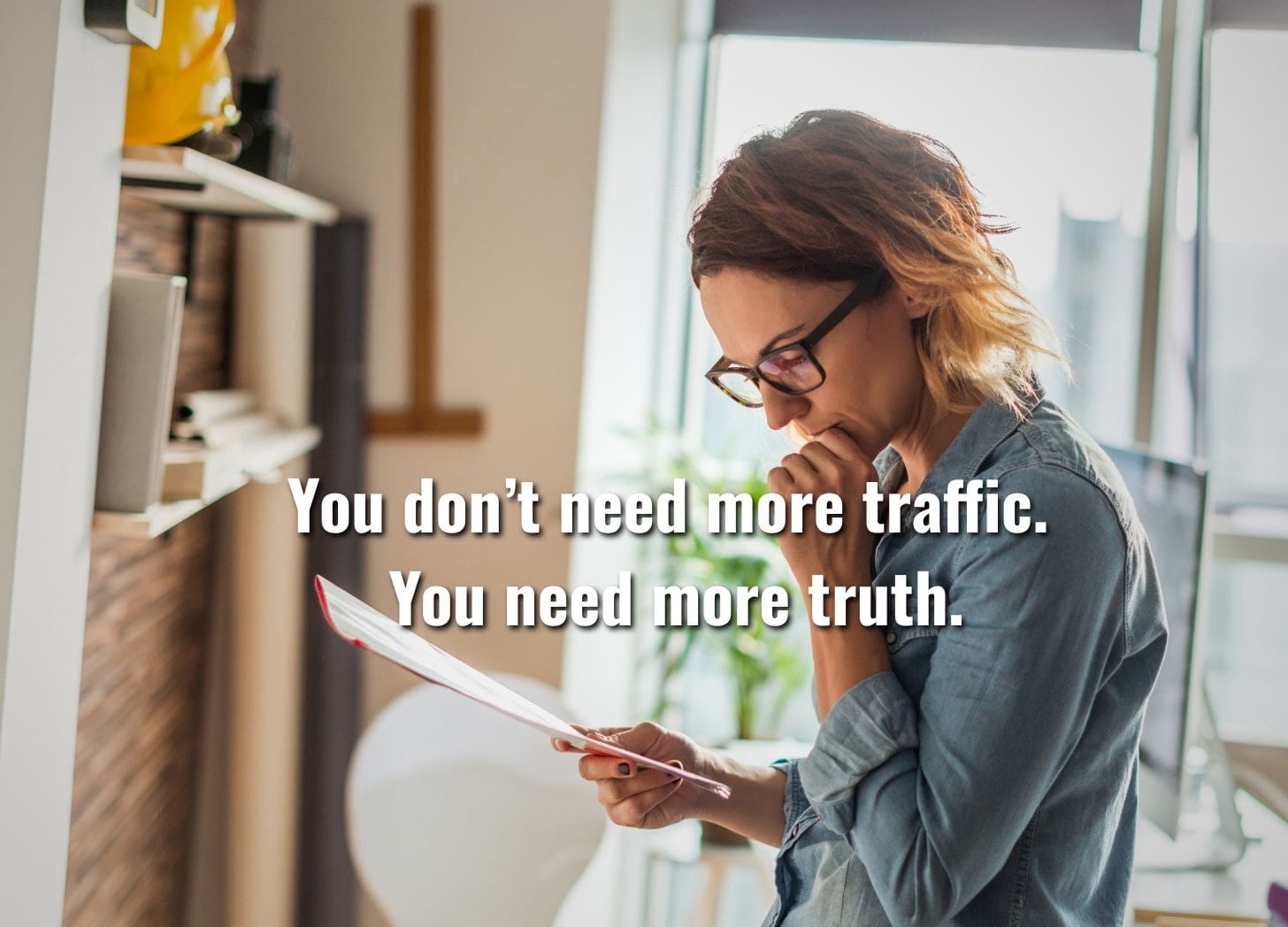Your Bookings Don’t Break Online — They Break Onsite
Your website can’t convert what your guest experience doesn’t deliver.
The Honest Check-In
You’re not losing bookings because no one can find you. You’re losing them because people did find you—and didn’t believe you.
Every photo, every word, and every detail in your stay either builds trust or breaks it. If your listing promises “peaceful retreat” but your reviews mention noise or confusion, you’ve created friction that marketing can’t hide.
Hospitality isn’t about tricking guests into clicking. It’s about designing moments worth returning to.
The Numbers Behind the Noise
Let’s talk about what the data actually says:
Direct bookings bring 60 percent more revenue per reservation than OTAs. Hotels averaged $519 per direct booking compared to $320 through OTAs.
When you lift your conversion rate from 2 percent to 4 percent, you double revenue without adding traffic.
Properties with review scores below 4.4 see roughly 30 percent fewer repeat guests.
Every additional second of website load time costs 7 to 10 percent of visitors.
Add that up. You’re not facing a traffic problem—you’re losing thousands in potential revenue every month because the story on your website and the experience in your property aren’t the same.
The Hospitality Pivot
The old approach was to buy more traffic and hope people book.
The new approach? Make your digital and physical experiences match.
Guests don’t buy visibility. They buy trust. And trust is built from alignment: when your online promise reflects your real-world delivery, conversion follows naturally.
Proof Wins: Turning Every Stay Into Marketing
1. Say It Like Your Guests Do
Use the language your guests already trust—theirs. Rewrite your homepage using phrases from 5-star reviews.
Example:
Before: “Luxury redefined.”
After: “You’ll fall asleep to mountain silence and wake to coffee on the porch.”
It’s not just better writing. It’s social proof in disguise.
2. Make Booking Feel Effortless
A Vermont inn added a small rate-comparison widget—“Our rate $189 | Booking.com $215.”
Their direct bookings increased 31 percent in 60 days.
Try this: book a stay on your own site in private browsing mode. Count every extra click. Simplify until you can go from homepage to confirmation in five or fewer steps.
3. Design a Story Guests Retell
Signature rituals—welcome drinks, local snacks, or a handwritten note—boost the number of positive review mentions by around 20 percent.
Memorable experiences multiply faster than paid ads. Add one distinctive moment this week and measure how often guests mention it online.
4. Fast Feels Professional
Speed communicates competence.
A mountain lodge improved load time from 8 to 2.4 seconds and watched conversion rise from 1.9 to 3.3 percent.
Run your website through Google PageSpeed Insights. Fix the top three issues. Time it again. If you can shave three seconds, you’ll likely increase bookings without spending a cent.
The 7-Day Trust Test
For the next week:
Read your last 20 reviews.
Highlight every line that sounds like marketing gold.
Use those phrases in your website copy or your next email campaign.
Goal: 15 percent longer time on site and one new direct booking this month—with zero ad spend.
The Hospitality Prompt of the Week
Copy the prompt into your AI tool of choice (ChatGPT, Claude, Gemini, etc). Fill in the details for your property, paste your guest reviews or content as requested, and let the AI do the heavy lifting. You’ll get professional-level results that sound like you and resonate with your guests.
You are a hospitality brand storyteller and conversion-focused copywriter.
Rewrite my property’s homepage intro paragraph using the guest reviews below.Inputs:
Property name and type (e.g., boutique inn, oceanfront villa, mountain cabin)
3 to 5 authentic guest reviews
Location and one signature experience (e.g., sunset view, handcrafted breakfast, private garden)
Desired tone (choose one: relaxed, refined, adventurous, family-friendly, romantic, eco-conscious)
Instructions:
Analyze the reviews to identify emotional themes (comfort, connection, surprise, relaxation) and sensory language (sound, touch, smell, view).
Rewrite the homepage intro using these guest-proven details as evidence.
Keep it under 120 words.
Use one sentence to build trust (“guests say,” “often described as,” “many return for…”).
End with one clear, guest-oriented call to action inviting direct booking.
Output Format:
Title suggestion (optional, <10 words)
Paragraph text (120 words max)
One tagline option (<10 words)
Example:
Before: “Modern condo with ocean views.”
After: “Guests call it their favorite place to recharge by the sea. You’ll hear waves before you see them, and realize every photo was true. Most stay longer than planned—and book again before they leave.”
From the Front Desk
I’ve seen so many owners spend on ads, photos, and funnels trying to fix what’s really a guest experience issue. Marketing doesn’t create magic. It just magnifies what’s already there.
When your stay lives up to your story, guests do the marketing for you. When it doesn’t, no algorithm or ad budget can hide the disconnect.
You don’t need more traffic. You need alignment between what you promise and what guests actually feel when they walk through the door.
Your Next Move
Smart Pineapple helps independent hotels and vacation rentals connect what guests see online with what they feel onsite. We build systems that:
Raise review scores
Increase direct bookings
Cut wasted ad spend
We don’t design websites. We build revenue systems that tell the truth.
Schedule a 20-minute strategy session and see where your story and your stay don’t yet match.




This piece really made me think about the whole user experience. It’s so tru that trust is the ultimate conversion metric. What do you think is the biggest hurdle for properties to bridge that digital-physical gap consistently? Your insights here are genuinely sharp and so well articulated.